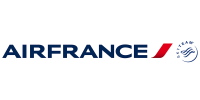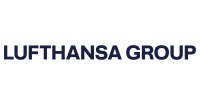Aeronautical Information Exchange system for Airlines Flight Operation Centre (FOC) at Lufthansa & Air France
Timeline

Description
The main objective of this Implementation Project is to enable the airlines of the Lufthansa Group and Air
France to deal with the aeronautical data that will be used by the SWIM Yellow Profile.
The implementation project focusses on the implementation upgrade of the FOC from LH & AF with Aeronautical Information Exchange systems and services in accordance with SWIM principles.
In particular the main activities performed are the service implementations to be compliant with the applicable version of Aeronautical Information Reference Model (AIRM), the AIRM Foundation Material and the Information Service Reference Model (ISRM) Foundation Material.
Furthermore, the Implementing Project includes the integration of the information provided by the Network Manager into the database.
Specific objectives:
The Implementing Project specifically aims to:
define, develop and deploy an AIXM 5.1 datastore that is able to store the digital aeronautical base data (especially the airspace structure data);
identify and deploy the SWIM infrastructure components for the retrieval of the digital data by use of the SWIM Yellow Profile;
deploy and integrate the legacy data into the new datastore;
ensure implementation of software components that support the users in the quality assurance of the digital data;
deploy and migrate the software components for the processing of the legacy data into the new datastore;
update all software components using the data (e.g. for flight planning purposes) to use the digital data and to access the new datastore;
achieve a implementation of SWIM services that allow other consumers to access the digital data.
Expected Results:
D-NOTAMs (Digital Notice to Airmen) are included in FOC;
Airspace Usage Plans (AUP, UUP) — ASM level 1, 2 and 3 is deployed;
Aerodrome mapping data and Airport Maps (including eTOD: electronic Terrain and Obstacle Data) are deployed;
Notification of the activation of an Airspace Reservation/Restriction (ARES) are deployed;
Notification of the de-activation of an Airspace Reservation/Restriction (ARES) are deployed;
Pre-notification of the activation of an Airspace Reservation/Restriction (ARES) are deployed;
Notification of the release of an Airspace Reservation/Restriction (ARES) - Aeronautical information feature on request are deployed.
Performance Benefits:
In particular the main benefit of this project is the increase of flight safety through processing digital data instead of manual data maintenance of AIP data. Furthermore flight efficiency is increased by 2 % through consideration for dynamic airspace data Information through B2B services. This is corresponding to 2 % increased fuel efficiency. The migration to the SWIM Yellow Profile for the retrieval
and provision of the concerned data will lead to increase the level of automation during data processing and reduction of personal costs. Furthermore the migration to an AIXM5.1 database will lead to compliance with Aeronautical Data Quality (ADQ) regulations.
PREVIOUS PROJECT DESCRIPTION FOR INFORMATION PURPOSES ONLY
General context
The implementation project aims to enable the airlines of the Lufthansa Group and Air France to deal with the aeronautical data that will being used by the SWIM Yellow Profile.
The implementation project focusses on the implementation upgrade of the FOC from LH & AF with Aeronautical Information Exchange systems and services in accordance with SWIM principles.
In particular the main activities performed are the service implementations to be compliant with the applicable version of Aeronautical Information Reference Model (AIRM), the AIRM Foundation Material and the Information Service Reference Model (ISRM) Foundation Material.
Integration of the information provided by the Network Manager into the database
Specific objectives
The implementation project aims to
define, develop and deploy an AIXM 5.1 datastore that is able to store the digital aeronautical base data (especially the airspace structure data)
identify and deploy the SWIM infrastructure components for the retrieval of the digital data by use of the SWIM Yellow Profile
deploy and integrate the legacy data into the new datastore
ensure implementation of software components that support the users in the quality assurance of the digital data
deploy and migrate the software components for the processing of the legacy data into the new datastore
update all software components using the data (e.g. for flight planning purposes) to use the digital data and to access the new datastore
achieve a implementation of SWIM services that allow other consumers to access the digital data
Expectet results
The following results are expected:
D-NOTAMs are inclued in FOC
Airspace Usage Plans (AUP, UUP) — ASM level 1, 2 and 3 is deployed
Aerodrome mapping data and Airport Maps (including eTOD: electronic Terrain and Obstacle Data) are deployed
Notification of the activation of an Airspace Reservation/Restriction (ARES) are deployed
Notification of the de-activation of an Airspace Reservation/Restriction (ARES) are deployed
Pre-notification of the activation of an Airspace Reservation/Restriction (ARES) are deployed
Notification of the release of an Airspace Reservation/Restriction (ARES)— Aeronautical information feature on request are deployed.
Performance benefits
In particular the main benefits of this project is the increase of flight safety by 100 % through processing digital data instead of manual data maintenance of AIP data.
Furthermore flight Efficiency is increased by 2 % through consideration fo dynamic airspace data Information through B2B services. This is coresponding to 2 % increeased fuel Efficiency.
The migration to the SWIM Yellow Profile for the retrieval and provision of the concerned data will lead to increase the level of automation during data processing and reduction of personal costs. Furthermore the migration to an AIXM5.1 database will lead to compliance with Aeronautical Data Quality (ADQ) regulations
The Lufthansa Group (Deutsche Lufthansa AG) is a global aviation group with a total of 540 subsidiaries and equity investments, which in the financial year 2015 were organised into the Passenger Airline Group,
Logistics, MRO, Catering and Other business segments (incl. the Lufthansa Systems GmbH & Co. KG). All the segments occupy a leading position in their respective markets. In 2015, the Lufthansa Group generated revenue of EUR 32.1bn and employed an average of 119,559 staff.
The Passenger Airline Group is the largest business segment in the Lufthansa Group. The Passenger Airline Group comprises the airlines Lufthansa Passenger Airlines (including Germanwings and Eurowings), SWISS and Austrian Airlines. The Lufthansa Group’s fleet consists of 600 aircraft. Aircraft from Airbus and Boeing make up the majority of the fleet. Aircraft from Bombardier, Embraer, Fokker and BAE Systems are also deployed on short and medium-haul routes.SEp
Additional Information
- Project Type: Airline
- CEF Call Year: 2017
- Civil/Military: Civil
- Multistakeholder: Yes
- Main AF: AF5 - Initial System Wide Information Management
- Sub AF: S-AF 5.3 - Aeronautical information exchange
- Progress Percentage: 90%
